Chocolate Confections on Every Corner
- emmabehrmann
- May 18, 2022
- 5 min read
The decadence of dark cocoa glistens beneath the glass of each pastry case pedestrians pass on Spanish streets. Chocolate coats pastries, fills tart shells and molds into bite-size circles to pop in your mouth.

Chocolate cravings are easy to satisfy while abroad in Spain; the difficulty lies in choosing among the plethora of options. From famous churros and chocolate to croissants with hidden surprises, you decide how much dark chocolate you consume.
The abundant presence of chocolate behind bakery windows is no surprise because Spain is the birthplace of modern chocolate. Spanish explorers brought the addictive substance to the continent more than 500 years ago when they first mixed bitter cocoa with sugar.
Spain’s Chocolate History
Spanish conquistadors arrived at the lands of Mayans and Aztecs and encountered a cold, bitter drink called xocolatl made from cacao beans. Hernan Cortes is credited with bringing the beans back to Spain, despite the explorers disliking the ritualistic, Mayan drink. The Spanish monks tinkered with cacao bean preparation and found adding sugar made it sweet and transformed the bitter beans into the chocolate flavor the world craves today.
The monks kept their recipe secret, so the hot chocolate drink remained within the borders of Spain and Portugal for 100 years before other European royalty adopted it. Soon after, chocolate became a symbol of wealth among European countries. The cacao beans spread across Europe, eventually being ground into powder and made into bars.
Now, the chocolate the Spanish sweetened hundreds of years ago enhances the country’s abundant treats. If you want to get your chocolate fix, the following confections may make your mouth water.
Famous Churros con Chocolate
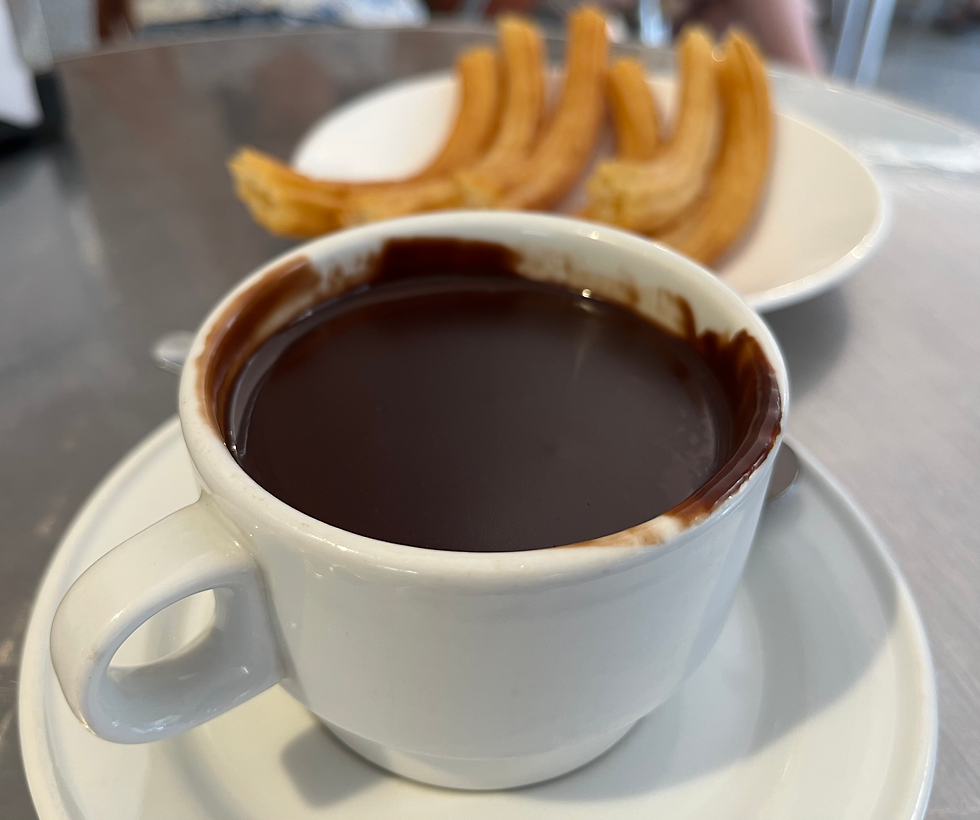
A ceramic coffee mug brims with a lava-like substance, begging you to take the plunge. The plate beside it offers the vessel: half a dozen churros. With a single dip, the fried dough receives an even coating of liquid chocolate. Following the initial crunch of the churro, a thick layer of warm chocolate covers your tongue. The lack of cinnamon sugar on the churros that Americans are used to reduces the sweetness and amplifies the richness of the cocoa.
Churros con chocolate, or churros with chocolate, remains an iconic dish eaten for breakfast, snack or dessert. Chocolaterias decorate Madrid’s streets, advertising the dynamic duo, but Chocolateria de San Gines is one of the most famous places to satisfy this churro and chocolate craving.
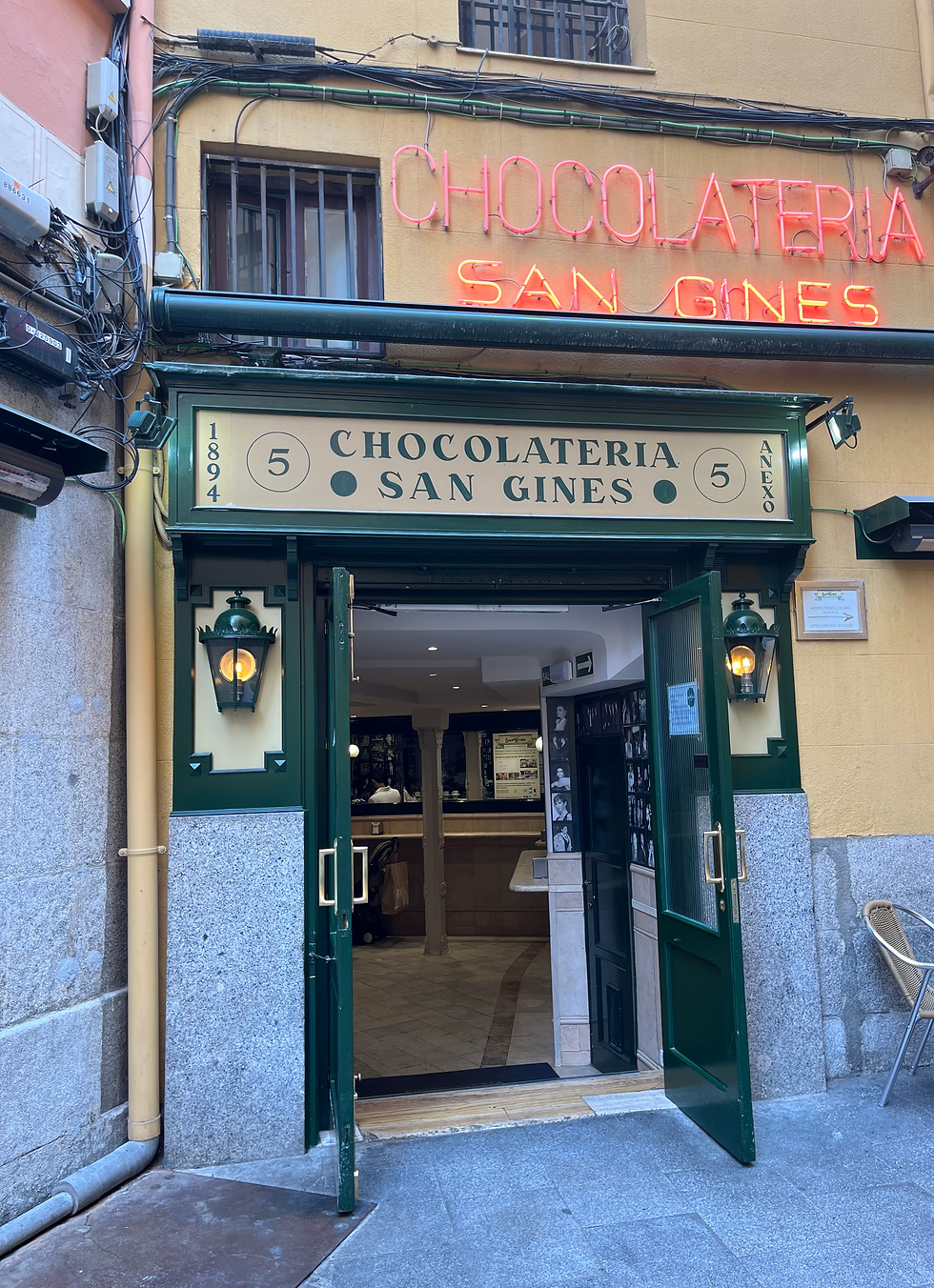
The chocolate shop rests in a passageway removed from the bustle of the country’s capital. Its green paneling and marble counters have greeted customers since 1894. A line snaked from where you order out toward old metal tables and wicker chairs, which were filled with smiling, chocolate-dipping customers.
At one of the tables sat Tracey Bittle, 43, who was visiting Madrid with a friend. This was her first time eating churros and hot chocolate, and the confection did not disappoint.
“It tastes like a circus in your mouth,” Bittle said, laughing between bites. She is not a self-proclaimed chocoholic but knew she had to taste the well-known pairing.
Inside the shop, Magaly Morillo, a San Gines employee, pours a metal pitcher overflowing with dark chocolate into stacks of ceramic mugs that will soon be devoured by waiting customers.
“San Gines is very popular,” Morillo said. “I pour chocolate all day. Hundreds and hundreds of people come here for our churros and chocolate. I love it too.”
Chocolate consumption in Spain doesn’t end with churros and chocolate. Take a look at any bakery, and good luck deciding which sweet to indulge in.
Baked Goods
Every few feet you walk, another glass case lined with baked goods tugs at your tastebuds. Little signs read “tarta de chocolate,” “palmerita” and “napolitana.”
Heart-shaped and chocolate-dipped, the palmera, and its miniature counterpart the palmerita, request a euro or two from your wallet. The palm pastries are strips of Spanish puff pastry dough rolled into a heart, baked and often dipped in dark chocolate. The Spanish enjoy these pastries as street food as their size permits.
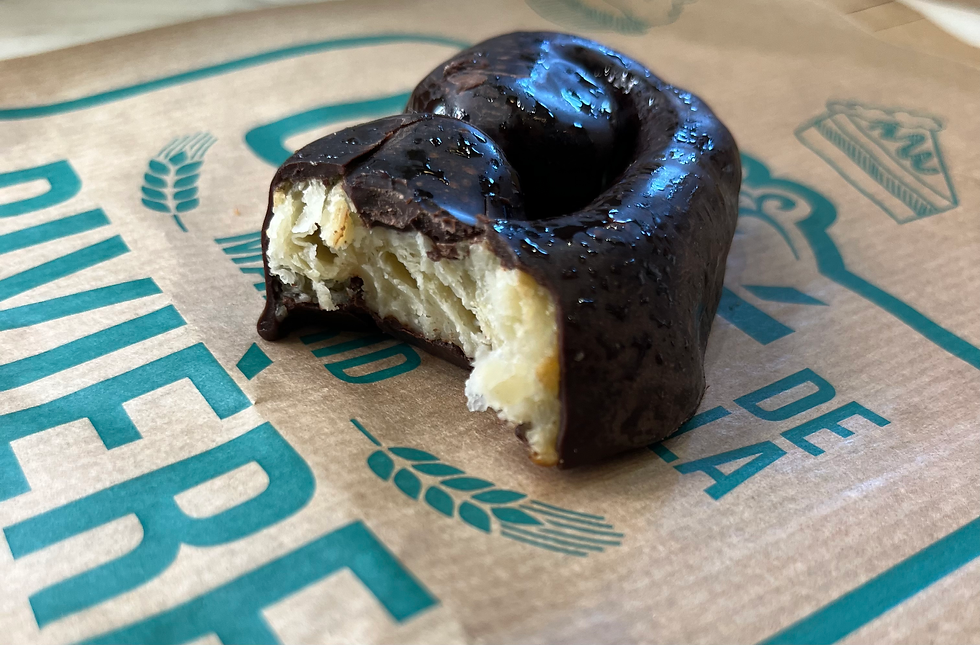
Cafe de la Riviere in Madrid offered both palm-sized palmeritas and book-sized palmeras. For €1, you can sink your teeth into a crisp layer of dark chocolate and savor the flaky, buttery pastry inside as you walk toward the Royal Palace of Spain.
Under the glare of the glass, napolitanas de chocolate neighbor palmeras and cakes. The rectangular pastry, similar to a croissant, hides a pillow of chocolate inside, but the chocolate sprinkles atop its sugar-induced sticky exterior hint at a chocolate surprise.

External coatings and internal delights allow you to consume chocolate along with a pastry, but you can also dive fully into chocolate itself with bonbons and bars.
Bonbons and bars
Bite-size and portable pieces of chocolate sit on trays, eyeing you and your wallet. The trays lack description; they only don the title “bombones,” which translates to bonbons. No matter what you order, the dark chocolate will tingle your tastebuds.
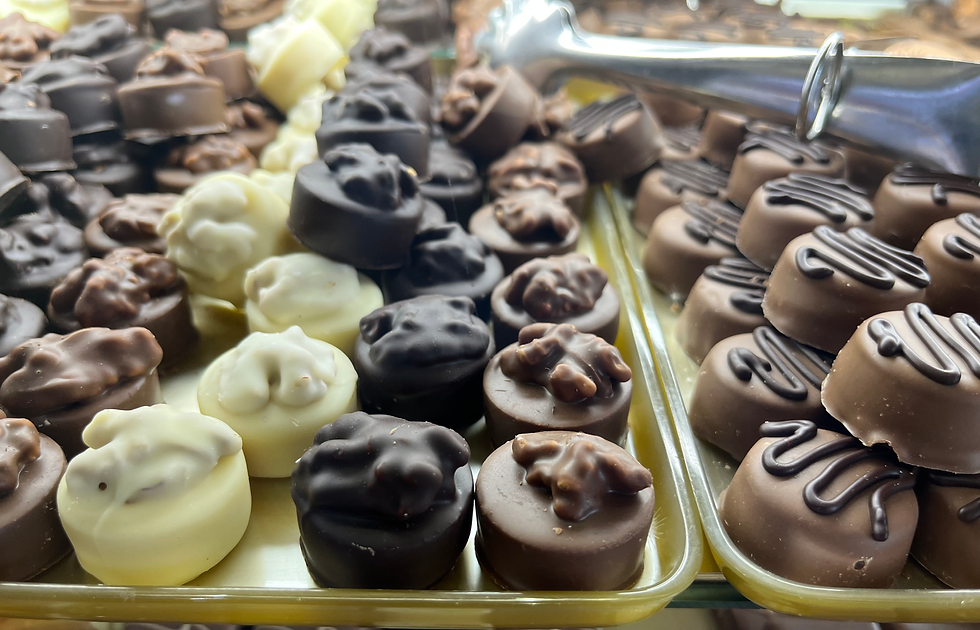
Inside Mercado de San Miguel in Madrid, Madre Amiga presented a wrap-around counter of pastries and desserts, but chocolate dominated the scene. One stretch of the counter displayed five trays of bonbons. Their size seemed to say “Just buy one! It can’t hurt.”
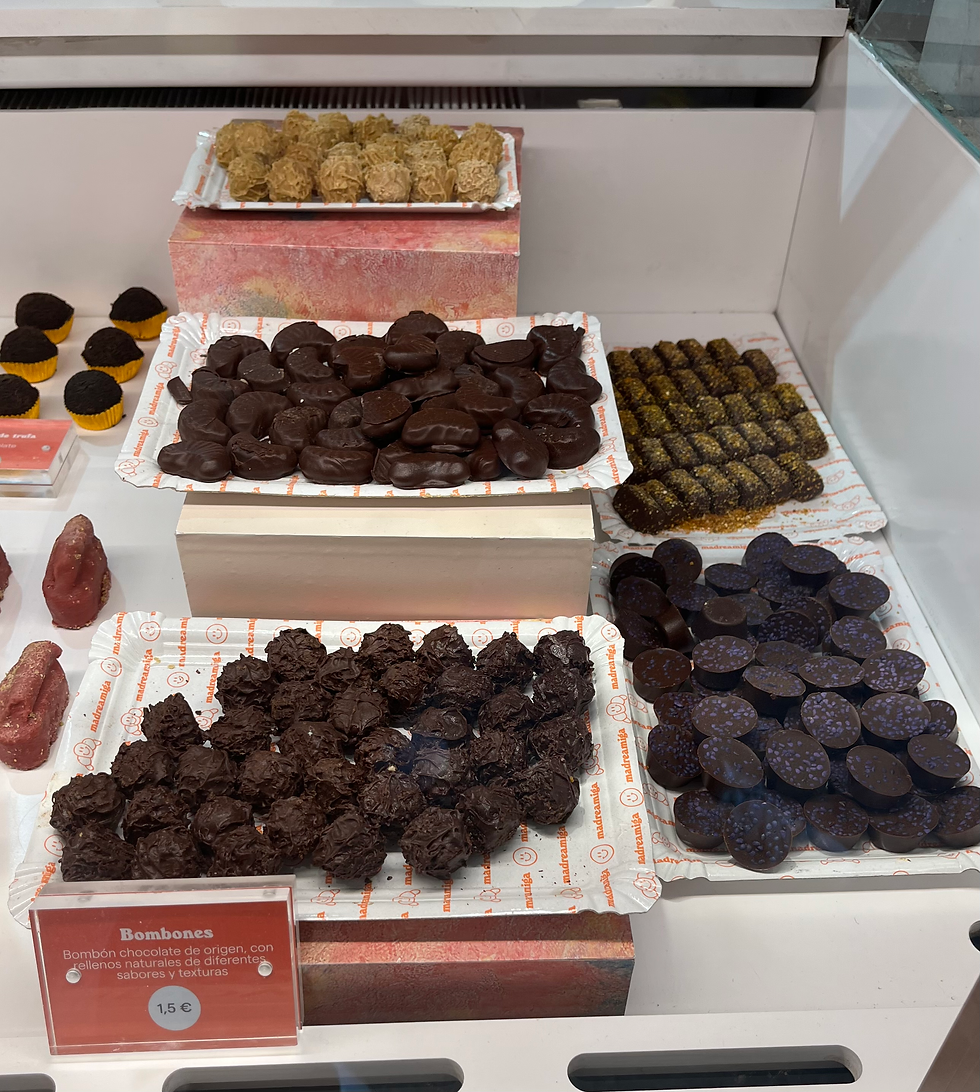
Mandarin orange-shaped chocolate hinted at a fruit hidden underneath its dark shell. With one bite, you discover you will not be eating fruit, but instead, a soft center melts upon your tongue, dispersing hints of citrus.
Although there was no surprise beneath the cocoa exterior of the orange bonbon, one of Madre Amiga’s truffle-like balls packs a punch. Malleable chocolate meets your teeth, dissolving in your mouth, but then, you hit a wall of crystallized sugar. When this breaks, the ball cracks in half, revealing a shot of rum. Now the bonbon serves as a shot glass, in which you cheers to the Spanish explorers who brought the cacao beans to Europe and chase the rum with more chocolate.

Chocolate bars are abundant in Spain. Chain stores like Valor and Torrons Vicens pose on the corners of Spain’s streets. Milk chocolate is available, but dark chocolate remains the most popular.
The packaging on each bar presents the percentage of cacao in the bar, proving its purity.

Even in Toledo, where marzipan reigns supreme, shops known for their marzipan sweets sold bonbons and chocolate bars. Juan Carlos Sanchez, the owner of Productos Tipicos de la Region in Toledo, has multiple shelves of dark chocolate bars in his shop. Many of the bars are 75% cacao paired with raisins or almonds grown in the region.
“Chocolate is loved all over the world,” Carlos Sanchez said. “Toledo is famous for marzipan, but everyone loves chocolate, so we sell it.”
Individual Desserts
If churros dipped in hot chocolate, chocolate-infused puff pastries and bonbons fail to satisfy your sweet tooth, more options exist beneath the glass of bakery cases and on the menus of tapas restaurants.

A tartaleta, or tart, beamed shades of brown. A marriage of caramel and chocolate promised a palate-pleasing first bite. This chocolate-infused tart sat beneath the glass where its dark appearance indicated richness and stood out among its fellow raspberry and lemon peers. The graham cracker-like chocolate crust crunched, contrasting the chocolate pudding center and gooey caramel topping.
Bakery and chocolateria counters are not the sole home for tastes of chocolate.
La Flauta, a tapas restaurant in Barcelona, tempts you with a three texture chocolate dessert, chocolate with churros, a brownie with chocolate and a serving of bread, chocolate, oil and salt.
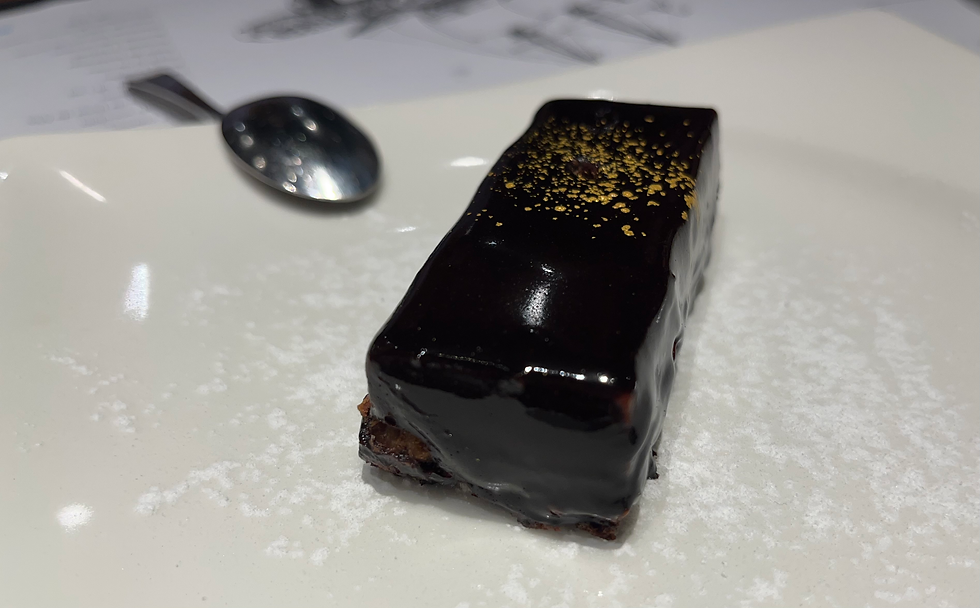
The three texture chocolate dessert packs the most cocoa. A glistening black rectangle rests upon powdered sugar and dons gold flakes. One spoon into its core reveals a chocolate mousse paired with a crunchy layer, both coated in liquid dark chocolate. Its miniature size reduces your risk of overindulgence and allows you to savor every bite.
Chocoholic or not, Spain’s stretch of bakeries and restaurants beckons you to delve into the dark chocolate the country brought to the world. Treat your tastebuds to the cocoa confections before your stay is over; they'll thank you.









Comments